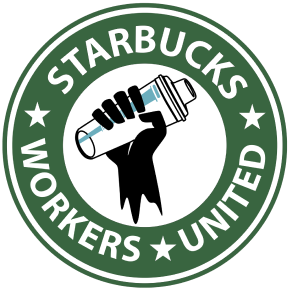The National Labor Relations Act (NLRA, also known as the Wagner Act) of 1935 ushered in a new era of union membership and workers’ rights, but its potential was limited by the passage of the Taft-Hartley Act a little more than a decade later.
How did Taft-Hartley come about?
Among other things, the NLRA gave workers the formal right to form unions and collectively bargain with their employers. It led to union membership reaching its peak in the years immediately following World War II.
However, by 1946, Republicans regained control of both houses of Congress for the first time in over a decade. They rose to power in part by promising to put an end to a “strike wave” sweeping through the nation at the time. Most unions had agreed to a “no-strike pledge” during the war years, so there was a concentration of labor actions following the cessation of conflict.
These freshmen Republicans formed a coalition with Southern Democrats who were becoming increasingly concerned that organized labor was threatening the white supremacist status quo. They passed the Taft-Hartley Act of 1947 to dismantle the labor gains of the New Deal era and tip the scales of bargaining power in favor of employers. The bill substantially re-wrote the NLRA and began the slow decline of union membership to the nearly all-time low we’ve reached today.
What is the “Right to Work” provision in Taft-Hartley?
Perhaps the most well-known and damaging of Taft-Hartley’s provisions is the authorization of so-called “right-to-work” laws. A union representing a workplace in a “right-to-work” state is forced to bargain for dues-paying members and non-members alike. They are prohibited from charging any fees to non-members in exchange for their representation. This disincentivizes workers from joining the union and guts union finances.
There are currently “right-to-work” laws on the books in 28 states and Guam. These laws have significantly reduced union membership, which has heavily contributed to the increase in inequality we’ve seen over the same timespan.
What is the “Free Speech” clause in Taft-Hartley?
The NLRA mandated that employers remain neutral while their employees attempt to organize a union. However, Taft-Hartley made it clear that any law abridging an employer’s right to express their views on unionization was a violation of their free speech. The “Free Speech” clause authorizes employers to hold so-called “captive audience” meetings to dissuade employees from joining a union.
Before almost any union election, bosses hold mandatory anti-union meetings and show propaganda videos to their employees. Workers can be fired for not showing up, leaving early, or asking too many questions. Employers are under no obligation to provide facilities or time to representatives from the union to present their case.
Taft-Hartley goes out of its way to protect the free speech of employers but actively restricts the free speech of workers.
What was the anti-communist pledge?
Sen. Joseph McCarthy (R-WI) was one of many freshman Republicans on Capitol Hill at the time of Taft-Hartley’s passage. Not coincidentally, the bill would feature an early version of what we’d now call McCarthyism.
Each union officer was required to submit an affidavit to the National Labor Relations Board (NLRB) stating that they were not a member of the Communist Party USA or any other organization supporting the overthrow of the United States government. Aside from being almost laughably unconstitutional, this created a major schism in the labor movement’s coalition of New Deal liberals and more radical socialists and communists.
Some unions were almost destroyed after the Congress of Industrial Organizations (CIO) decided to instruct its members to sign the affidavits and began purging radicals from its leadership.
The anti-communist provision was later repealed, but the damage was already done.
What is the ban on secondary boycotts?
Taft-Hartley bans secondary boycotts, but as Rich Yeselson has noted in The American Prospect, it doesn’t manage to provide a clear definition of what a secondary boycott is.
Generally, a secondary boycott is understood to mean striking workers from one company putting pressure on a third party to stop doing business with their company. For example, workers for a juice company might try to convince a grocery store chain to stop carrying their company’s juice. This is a common practice used by unions all over the world.
That may seem simple enough, but the sections of the act dealing with this issue are a series of linguistic somersaults and legal gobbledygook. Trying to read the NLRB’s “explanation” of the law is a great way to ruin your day. As a result, lawyers have been arguing about which actions are legal for the last 74 years.




